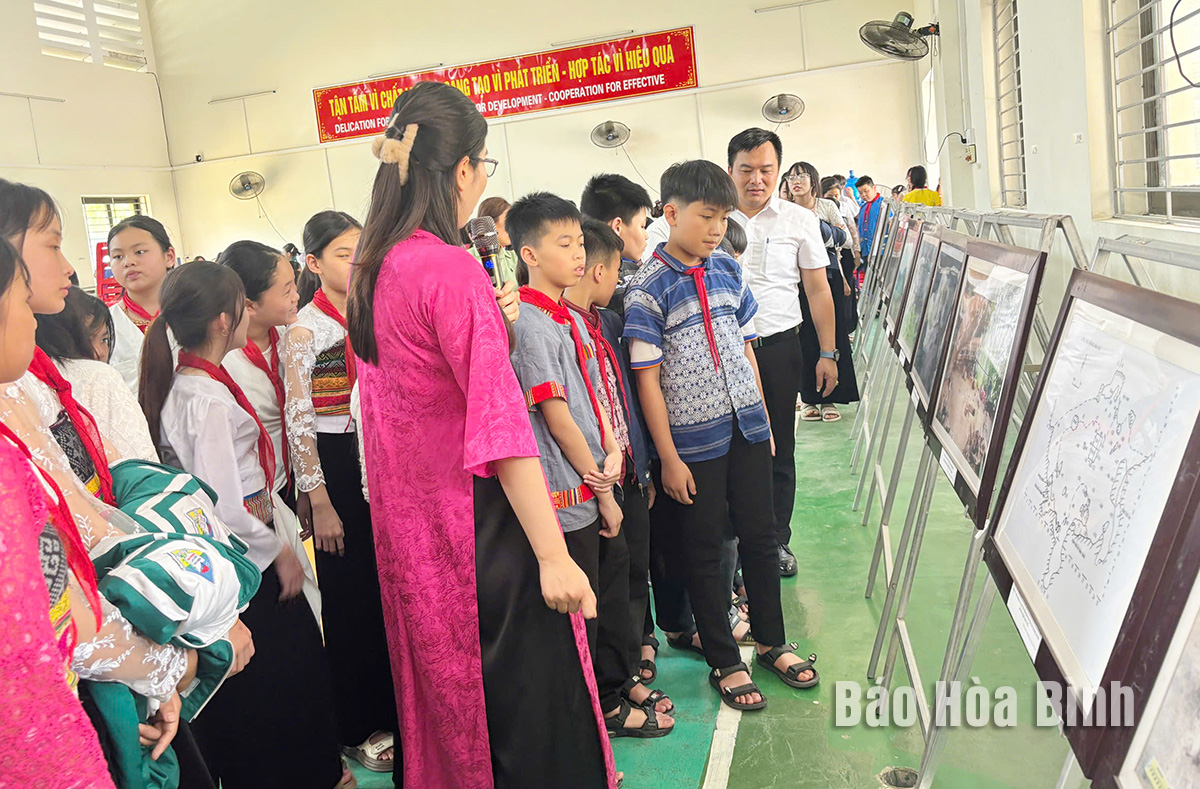
On April 17th, Hoa Binh Provincial Museum organized a program to promote and introduce the outstanding values of "Hoa Binh Culture” at the Boarding Secondary and High School for ethnic minority students in Mai Chau District.

The museum’s officials
provided a wealth of information about the "Hoa Binh Culture” to the students
of the Boarding Secondary and High School.
During
the program, the officials from the Provincial Museum shared the valuable
insights about "Hoa Binh Culture”. Thí is a
prehistoric archaeological culture from the Stone Age, which is famous not only in Vietnam but it also is influential
in many Southeast Asian countries. Dating back approximately 30,000 to 7,500
years ago, "Hoa Binh Culture” serves as the evidence of the long-standing
history and rich cultural traditions of Hoa Binh people.
In
Mai Chau District, there are currently five archaeological sites associated
with the "Hoa Binh Culture”: Khau Puc Cave (also known as Thoc Giong Cave), Dan
Dua Rock Shelter, Phung Quyen Rock Shelter, Lang Cave and Khoai Cave. Among
them, Lang Cave (recognized as a national heritage site in 2005) and Khoai Cave
(recognized in 1997) are considered the most representative.
The
results of archaeological research and excavations in Mai Chau have provided
important materials for the history education and have helped
clarify the natural and social development process of "Hoa Binh Culture.” These
findings also serve as a foundation for the locality to develop the unique
cultural-archaeological tourism products that cater to the needs of visitors,
students and researchers.
Through
the program, the students gained a deeper understanding of the cultural roots
of the nation, helping to foster a sense of responsibility in preserving and
promoting the cultural heritage, and contributing to spreading the love
for the homeland and the country throughout the community.
More than just an information technology teacher, Bui Van Nien is an inspiring figure who has nurtured the scientific curiosity and creative spirit of students in Vietnam’s ethnic minority communities.
Da Bac is the most disadvantaged mountainous district in Hoa Binh province, with ethnic minorities accounting for about 90% of its population. Over the past years, the district has mobilised resources to implement ethnic policies to improve the quality of life of local people.
In recent years, Hoa Binh province has consistently prioritised the protection, care, and education of children, particularly those from ethnic minorities and disadvantaged backgrounds, by creating a safe, healthy, and nurturing environment for their all-round development.
The Steering Committee for Tobacco Harm Prevention and Control of Hoa Binh province, in coordination with the Tobacco Harm Prevention and Control Fund, held a ceremony on May 28 in response to the World No Tobacco Day (May 31) and the National No Tobacco Week (from May 25 to 31). The event was chaired by Nguyen Van Toan, Standing Vice Chairman of the provincial People’s Committee and head of the Steering Committee.
Since 2021, the Center for Industrial Promotion and Industrial Development Consulting (CIIDC) under the Department of Industry and Trade has been implementing a school lighting model as part of the plan for using energy efficiently and economically in Hoa Binh Province in the pẻiod of 2021 - 2025. This model not only aims to improve the learning conditions and enhance the education quality, but it also promotes the message of energy saving, energy security, environmental protection and contributes to the goals of socio-economic development.
In the 2024 - 2025 school year, the entire Hoa Binh provincial education sector includes 520 educational institutions and schools. Among them are 13 ethnic boarding schools with 153 classes and 4,487 students. Four of these schools have met national standards, reaching 30.7 percent.



